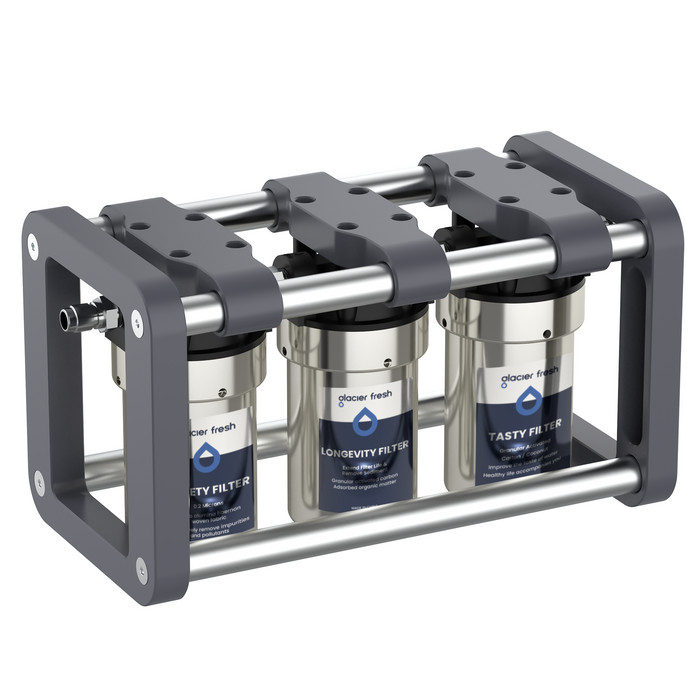Unlocking the Secret to Crystal Clear Water: Discover Membrane Technology for Your RV!
When you're out exploring the great outdoors in your RV, the last thing you want to worry about is the quality of your water supply. Clean, safe drinking water is essential not only for hydration but also for cooking, cleaning, and maintaining overall health during your travels. However, the reality is that many RV owners face challenges in ensuring their water is free from contaminants. This is where membrane technology comes into play. By utilizing advanced filtration techniques, membrane technology offers a robust solution to treat water effectively, making it an invaluable asset for any RV enthusiast. In this article, we'll delve into the various applications of membrane technology and how it can transform your RV experience by providing crystal-clear water.

Understanding Membrane Technology
Membrane technology involves the use of selective barriers to separate contaminants from water, thereby improving its quality. At its core, this technology operates on the principle of filtration, where water is pushed through a semi-permeable membrane that allows only certain molecules to pass while blocking others. Different types of membranes are used depending on the desired level of purification. For instance, reverse osmosis membranes are designed to remove dissolved solids and impurities at a molecular level, while ultrafiltration membranes target larger particles and bacteria. By harnessing these filtration processes, membrane technology effectively enhances water quality, making it safe and suitable for consumption and use in RVs.
Applications of Membrane Technology in RVs
In the context of RV water systems, membrane technology can be applied in several ways to optimize water quality. Reverse osmosis systems are particularly popular among RV owners, as they can effectively remove a wide range of contaminants, including salts, heavy metals, and microorganisms. Additionally, ultrafiltration systems provide an excellent solution for those looking to filter out larger particulates and pathogens without the need for chemical additives. Another application is nanofiltration, which balances the removal of hardness minerals while allowing essential minerals to remain in the water. These technologies not only ensure cleaner water but also enhance the overall RV experience by providing peace of mind regarding water safety during your adventures.
Benefits of Using Membrane Technology in RVs
Adopting membrane technology for water treatment in RVs offers numerous benefits. Firstly, the improved water quality enhances your overall experience, reducing the risk of waterborne illnesses and providing better-tasting water. Portability is another significant advantage; many membrane systems are compact and designed specifically for RV installations, making them easy to set up and use. Additionally, the ease of installation and low maintenance requirements make these systems attractive options for RV owners who prefer hassle-free solutions. Environmentally, using membrane technology can reduce plastic waste by minimizing the need for bottled water, encouraging more sustainable practices while on the road.
Factors to Consider When Evaluating Membrane Technology Products
When choosing a membrane technology solution for your RV, several factors should be considered to ensure you select the right system. Efficiency is paramount; look for systems that provide high purification rates and can accommodate your daily water needs. Capacity is another critical aspect, as some systems may be designed for small-scale use while others can handle larger volumes. Maintenance requirements should also be evaluated; opt for products that offer easy cleaning and replacement of membranes to keep your system functioning optimally. Finally, consider the overall durability and design of the system to ensure it can withstand the rigors of life on the road.
Case Studies: Successful Membrane Technology Implementations
Imagine an RV family embarking on a cross-country trip, equipped with a reverse osmosis water filtration system. As they travel through remote areas, they encounter various water sources, some of which appear questionable. Thanks to their filtration technology, they can draw water from lakes and rivers, ensuring it is clean and safe for consumption. In another scenario, a retired couple uses an ultrafiltration system to treat water from their RV park, eliminating concerns about bacteria and contaminants. These hypothetical cases illustrate the transformative power of membrane technology in enhancing water quality, ultimately leading to healthier and more enjoyable RV experiences.
Enhancing Your RV Water Quality with Membrane Technology
In summary, membrane technology plays a vital role in ensuring clean, safe water for RV enthusiasts. By understanding the various applications and benefits of this technology, RV owners can make informed decisions about their water treatment solutions. With the right membrane technology in place, you can elevate your RV experience, allowing you to enjoy your travels with confidence in the quality of your water supply. As you explore the open road, consider investing in these innovative solutions to ensure your adventures are as enjoyable as possible.








